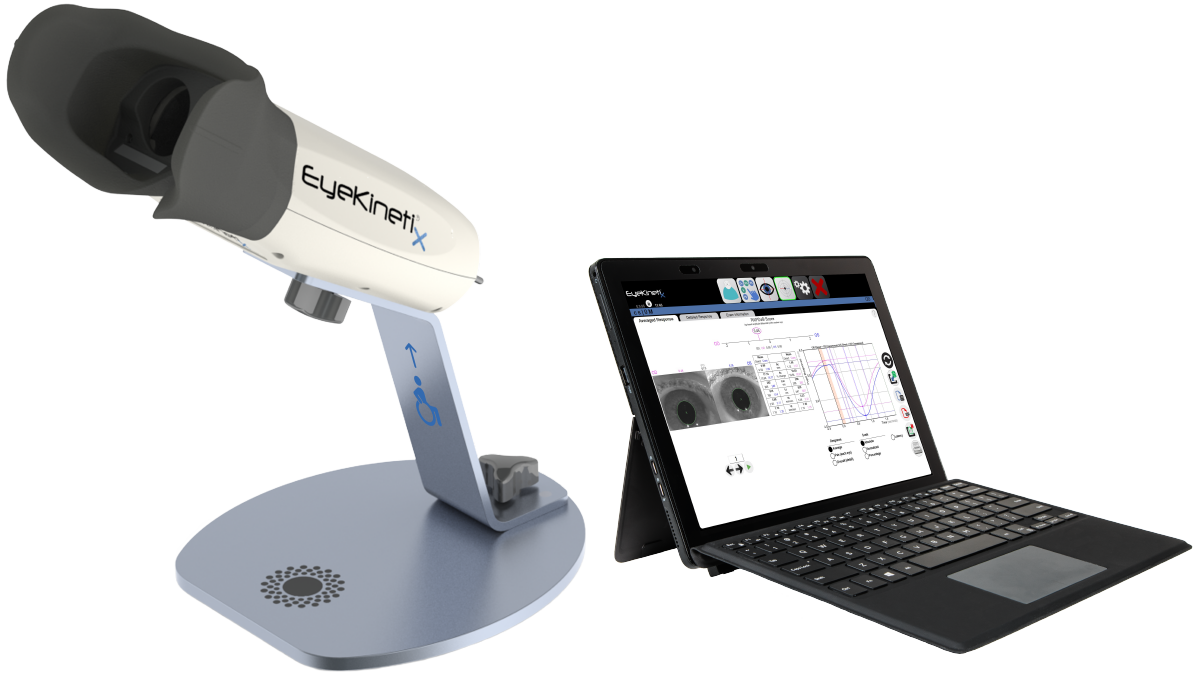
Frequently Asked Questions
Yes. CPT Code 95919
Quantitative pupillometry with physician or other qualified health care professional interpretation and report, unilateral or bilateral.
In most, if not all states in the USA, yes. Many other countries also require or recommend pupillary testing.
Less than 1 minute.
Yes. Results are presented as the ‘RAPDx score’, which is an analog of the swinging flashlight method APD. With the flashlight this is quantified using neutral density filters. Note the RAPDx score is an order of magnitude more granular than ND quantified asymmetry, E.G. 0.37 (RAPDx score) vs 0.3 (NDF).
It does not. It means the pupillary reflex is symmetric, and could mean that both eyes or normal of both eyes are affected equally. It does however provide objective documentation that the APD was not missed.
Less than 1 minute.
Maybe. It meets the criteria however please consult with your tax professional.
It is quick and easy to sanitize using at 70% isopropyl alcohol and no additional cleaning is required specifically for COVID-19. There is an additional benefit in terms of greater distance from the patient compare to the singing flashlight test.
Specifications
|
Fundamental Method
|
Objective, automated, infrared pupillography
|
|
Testing Options
|
RAPDx® test for RAPD Assessment
Low-High Test: Scotopic/Photopic pupil measurements + IPD |
|
Analysis Area
|
40.6 X 30.4 mm (viewable)
15.9 x 12.7 mm (analyzed) |
|
Form Factor
|
Small desktop device or may be unmounted to use as hand-held for patients requiring accessibility and/or mobility assistance
|
|
Stimulator System
|
Array of white, red, and blue high brightness, high dynamic range LEDs
|
|
Imaging System
|
Binocular synchronized resolution NIR sensitive machine-vision cameras |
|
Frame Rate
|
60Hz |
|
Resolution
|
Up to 1280 x 960 pixels per eye
|
|
Eye tracking & Image Analysis
|
Real-time proprietary machine-vision algorithm detects pupil size, center, and location
|
|
Outlier & Blink Rejection
|
Automatic blink rejection and outlier analysis. Manual override available
|
|
Database & Storage
|
Patient Name, ID, DOB searchable database.
Pupil recordings saved for playback |
|
Reporting
|
On-screen
PDF to network printer PDF to network EMR location |
|
Computer
|
Windows 10 Pro 12.2” touch-screen convertible tablet PC with Intel Core i5-8250U, 8GB RAM, 256GB Solid-State Storage
|
|
Regulatory
|
FDA Listed | Health Canada Licensed
|
